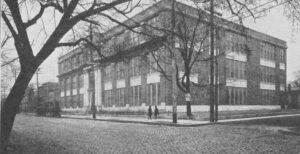
Foreshadowing Brown: How a South Carolina Case Influenced the Supreme Court's School Desegregation Ruling
As teachers, we know students become more interested in historical events if you can establish a local connection. Here is a story I used with my South Carolina students to create such a link to the 1954 Supreme Court decision in Brown v. Board of Education.
On May 24, 1951, Dr. Kenneth Clark, a distinguished African-American psychology professor from City College of New York, visited the small, impoverished community of Summerton, SC. He was there at the behest of the NAACP Legal Defense Fund’s lead attorney, Thurgood Marshall to conduct social science experiments with African-American children attending racially segregated schools. Clark showed the children a brown doll and a white doll. He asked the children which doll was “nice” and which doll was “bad.” Ten of the 16 children said the brown doll looked bad. Clark’s findings from this experiment and others he conducted that day led him to conclude that segregated schools instilled a sense of inferiority in African-American children. Marshall used Clark’s experiments as evidence that segregation discriminated against African-American children in the 1952 case of Briggs v. Elliott. Some of you may be thinking: What? That is not right! Marshall used Clark’s famous doll experiments in Brown!
Brown consolidated cases from several states posing an identical constitutional question. Did segregation in public schools violate the 14th Amendment’s Equal Protection Clause? Marshall’s original client was not little Linda Brown of Topeka, Kansas, but Harry and Eliza Briggs of Clarendon County, South Carolina. In 1950, Clarendon County had 6,531 black students and 2,375 white students enrolled in public schools, but spent $179 per White pupil and only $43 per Black student. As a consequence, the state was forced to concede to the Federal District Court that racially segregated schools were not equal in Clarendon County. They asked for time to equalize the schools, citing a push by the state to boost public school spending. In a 2-1 decision, the District Court ruled the county should have more time to equalize facilities without ending segregation.
The Briggs family was one of approximately 20 African-American families in Summerton who had been pushing for better schools for their children for years. They often supplied sweat equity when county officials denied them needed funds for basic services. They repaired broken windows. They raised money to purchase a bus. They fixed the bus themselves when it broke down, which it did frequently. Many students walked over 8 miles to school, sometimes rowing a boat across a swollen river. Many others gave up. Attendance was poor.
Frustrated parents first approached the county school superintendent, R. W. Elliott, about purchasing and maintaining a bus for black students. Elliott allegedly responded with profanity and racial epithets, prompting the parents to drop their “bus only” demand. Instead they sued for an end to segregated schools. Led by an influential African-American preacher and teacher, the Rev J. A. DeLaine, they contacted the NAACP Legal Defense Fund. The NAACP was initially concerned that the plaintiff families would not have the courage to stay the course. Jobs were at risk due to vengeful white employers. Violence could not be ruled out. In fact, after the lawsuit became public, both Harry and Eliza Briggs lost their jobs, and Rev. DeLaine fled to North Carolina when his life was threatened..
The plaintiffs lost in district court, 2-1, but were encouraged by the forceful dissent of Judge Waites Waring. Waring found the evidence compiled by Professor Clark persuasive. In his dissent, he argued that “segregation is per se unequal,” a phrase picked up by Chief Justice Earl Warren in Brown and changed to “segregation is inherently unequal.” The Brown opinion also cited the findings of Dr. Clark: the first time in Supreme Court history that the results of a scientific experiment were used as evidence for a majority opinion. Judge Waring, a native of Charleston who had previously been seen as a pillar of the local establishment, was ostracized by Charleston society. Some say this was because of his stand in favor of civil rights; others because he had divorced his first wife and married a divorced woman from New York. Whatever the cause, the Warings chose to leave Charleston for New York soon after the Brown decision was handed down.
The names of Kenneth Clark, Thurgood Marshall, Earl Warren, and Linda Brown are mentioned in nearly every description of Brown v Board of Education. But the first of the five cases that were combined into the Brown case and the only one from the Deep South was Briggs v Elliott. Marshall’s use of the Clark experiments in that case and Judge Waring’s dissent foreshadowed the Brown ruling in 1954.
Resources for further reading:
- https://www.archives.gov/education/lessons/briggs-v-elliot.html
- https://americanhistory.si.edu/brown/history/4-five/clarendon-county-3.html
- Tinsley E Yarbrough, A Passion for Justice: J Waites Waring and Civil Rights (Oxford University Press, 1987).


